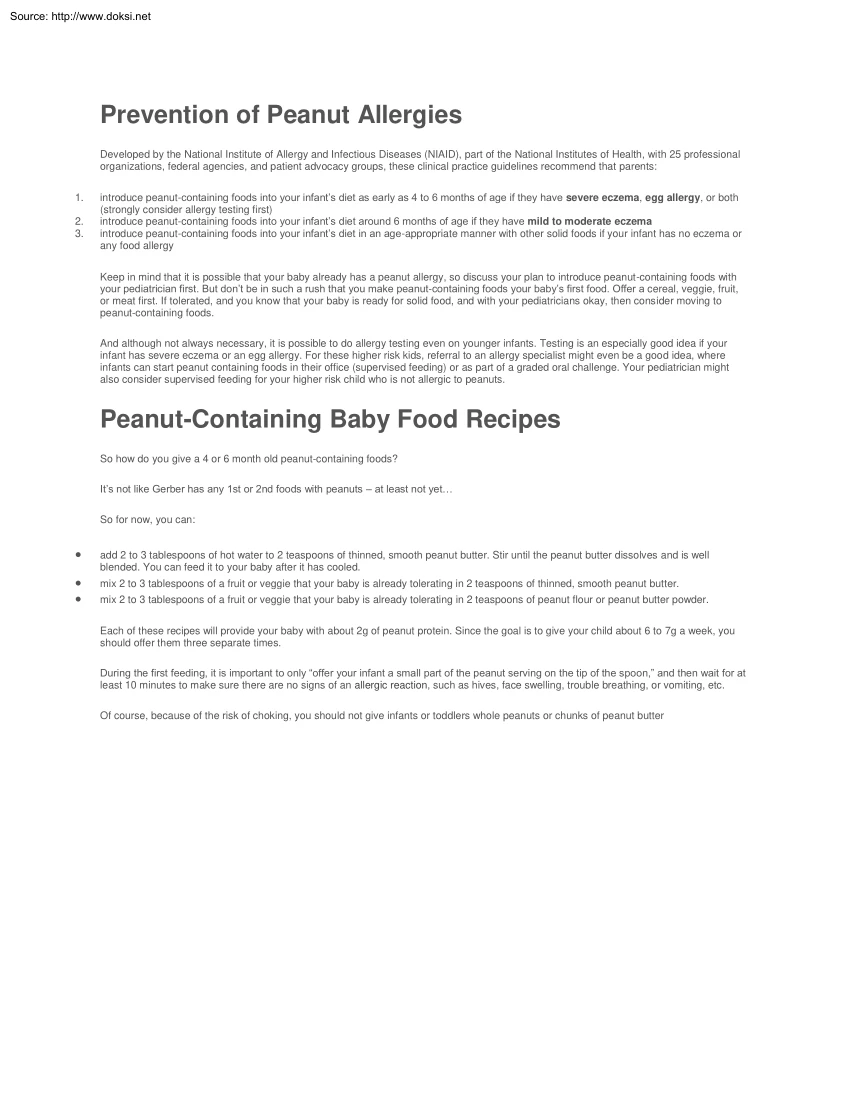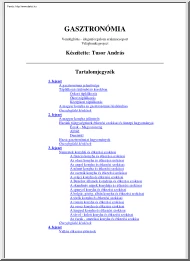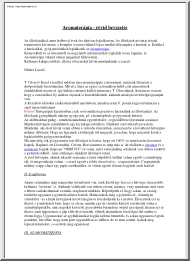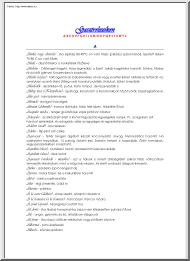Datasheet
Year, pagecount:2017, 1 page(s)
Language:English
Downloads:4
Uploaded:November 08, 2018
Size:694 KB
Institution:
-
Comments:
Attachment:-
Download in PDF:Please log in!
Comments
No comments yet. You can be the first!Most popular documents in this category
Content extract
Source: http://www.doksinet Prevention of Peanut Allergies Developed by the National Institute of Allergy and Infectious Diseases (NIAID), part of the National Institutes of Health, with 25 professional organizations, federal agencies, and patient advocacy groups, these clinical practice guidelines recommend that parents: 1. 2. 3. introduce peanut-containing foods into your infant’s diet as early as 4 to 6 months of age if they have severe eczema, egg allergy, or both (strongly consider allergy testing first) introduce peanut-containing foods into your infant’s diet around 6 months of age if they have mild to moderate eczema introduce peanut-containing foods into your infant’s diet in an age-appropriate manner with other solid foods if your infant has no eczema or any food allergy Keep in mind that it is possible that your baby already has a peanut allergy, so discuss your plan to introduce peanut-containing foods with your pediatrician first. But don’t be in such a rush that
you make peanut-containing foods your baby’s first food Offer a cereal, veggie, fruit, or meat first. If tolerated, and you know that your baby is ready for solid food, and with your pediatricians okay, then consider moving to peanut-containing foods. And although not always necessary, it is possible to do allergy testing even on younger infants. Testing is an especially good idea if your infant has severe eczema or an egg allergy. For these higher risk kids, referral to an allergy specialist might even be a good idea, where infants can start peanut containing foods in their office (supervised feeding) or as part of a graded oral challenge. Your pediatrician might also consider supervised feeding for your higher risk child who is not allergic to peanuts. Peanut-Containing Baby Food Recipes So how do you give a 4 or 6 month old peanut-containing foods? It’s not like Gerber has any 1st or 2nd foods with peanuts – at least not yet So for now, you can: add 2 to 3
tablespoons of hot water to 2 teaspoons of thinned, smooth peanut butter. Stir until the peanut butter dissolves and is well blended. You can feed it to your baby after it has cooled mix 2 to 3 tablespoons of a fruit or veggie that your baby is already tolerating in 2 teaspoons of thinned, smooth peanut butter. mix 2 to 3 tablespoons of a fruit or veggie that your baby is already tolerating in 2 teaspoons of peanut flour or peanut butter powder. Each of these recipes will provide your baby with about 2g of peanut protein. Since the goal is to give your child about 6 to 7g a week, you should offer them three separate times. During the first feeding, it is important to only “offer your infant a small part of the peanut serving on the tip of the spoon,” and then wait for at least 10 minutes to make sure there are no signs of an allergic reaction, such as hives, face swelling, trouble breathing, or vomiting, etc. Of course, because of the risk of choking, you should not give infants or
toddlers whole peanuts or chunks of peanut butter
you make peanut-containing foods your baby’s first food Offer a cereal, veggie, fruit, or meat first. If tolerated, and you know that your baby is ready for solid food, and with your pediatricians okay, then consider moving to peanut-containing foods. And although not always necessary, it is possible to do allergy testing even on younger infants. Testing is an especially good idea if your infant has severe eczema or an egg allergy. For these higher risk kids, referral to an allergy specialist might even be a good idea, where infants can start peanut containing foods in their office (supervised feeding) or as part of a graded oral challenge. Your pediatrician might also consider supervised feeding for your higher risk child who is not allergic to peanuts. Peanut-Containing Baby Food Recipes So how do you give a 4 or 6 month old peanut-containing foods? It’s not like Gerber has any 1st or 2nd foods with peanuts – at least not yet So for now, you can: add 2 to 3
tablespoons of hot water to 2 teaspoons of thinned, smooth peanut butter. Stir until the peanut butter dissolves and is well blended. You can feed it to your baby after it has cooled mix 2 to 3 tablespoons of a fruit or veggie that your baby is already tolerating in 2 teaspoons of thinned, smooth peanut butter. mix 2 to 3 tablespoons of a fruit or veggie that your baby is already tolerating in 2 teaspoons of peanut flour or peanut butter powder. Each of these recipes will provide your baby with about 2g of peanut protein. Since the goal is to give your child about 6 to 7g a week, you should offer them three separate times. During the first feeding, it is important to only “offer your infant a small part of the peanut serving on the tip of the spoon,” and then wait for at least 10 minutes to make sure there are no signs of an allergic reaction, such as hives, face swelling, trouble breathing, or vomiting, etc. Of course, because of the risk of choking, you should not give infants or
toddlers whole peanuts or chunks of peanut butter





 When reading, most of us just let a story wash over us, getting lost in the world of the book rather than paying attention to the individual elements of the plot or writing. However, in English class, our teachers ask us to look at the mechanics of the writing.
When reading, most of us just let a story wash over us, getting lost in the world of the book rather than paying attention to the individual elements of the plot or writing. However, in English class, our teachers ask us to look at the mechanics of the writing.